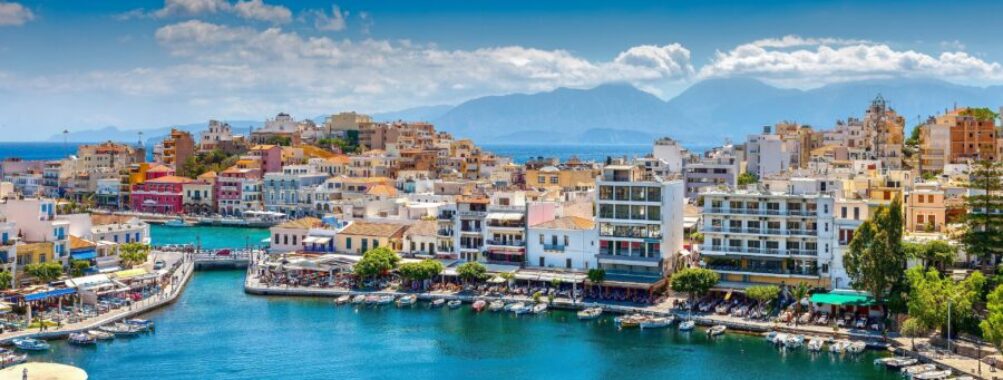
Best Time to Visit Crete: Seasonal Guide for Perfect Mediterranean Getaways in 2025
Planning a trip to Crete? Timing really makes or breaks your experience on this gorgeous Greek island.
Crete enjoys a Mediterranean climate—mild winters, hot summers, all that. Still, some months just feel better than others. Honestly, the best time to visit Crete is mid-May to June or September to October, when you get warm weather without the crowds.
Those shoulder seasons? Kind of a sweet spot. You get pleasant temps and room to breathe, not to mention wildflowers in spring and lively harvests in fall.
Contents
- Key Takeaways
- Understanding Crete’s Climate Throughout the Year
- Overview of Crete’s Mediterranean Climate
- Temperature Variations by Season
- Rainfall Patterns and Their Impact
- Sunshine and Number of Sunny Days
- Crete’s Seasons: When to Visit and What to Expect
- Spring: Mild Weather and Blooming Landscapes
- Summer: Hot Summers and Vibrant Atmosphere
- Autumn: October and the Shoulder Season
- Winter: Tranquil Getaways and Unique Experiences
- Regional Highlights: Weather and Tourism by Location
- Heraklion: Capital City Climate and Activities
- Chania: Western Crete’s Seasonal Appeal
- Exploring Iconic Beaches
- Outdoor Activities and Seasonal Recommendations
- Hiking Opportunities and Best Months for Trails
- Beach Days and Swimming Season
- Cultural Experiences and Historical Attractions
- Visiting Archaeological Sites at the Right Time
- Must-See Historical Sites
- Comparing Crete to Other Greek Islands
- Why Crete Stands Out for Travelers
- Seasonal Differences Across the Greek Islands
- Frequently Asked Questions
- What is the ideal month for optimal weather in Crete?
- How does Crete’s climate vary throughout the year?
- Which season offers the most comfortable experience for tourists in Crete?
- Are there specific months when it’s advisable to avoid visiting Crete due to weather?
- When does Crete experience its peak tourist season, and what are the implications for visitors?
- Can you provide insights on sea conditions for swimming in Crete during different times of the year?
- More Travel Guides
Key Takeaways
- Go in the shoulder seasons (mid-May to June or September to October) for ideal weather and fewer tourists.
- Spring brings wildflowers, fall means harvest festivals and the sea’s still inviting.
- Crete’s microclimates vary—a lot. The south coast usually feels warmer than the north.
Understanding Crete’s Climate Throughout the Year
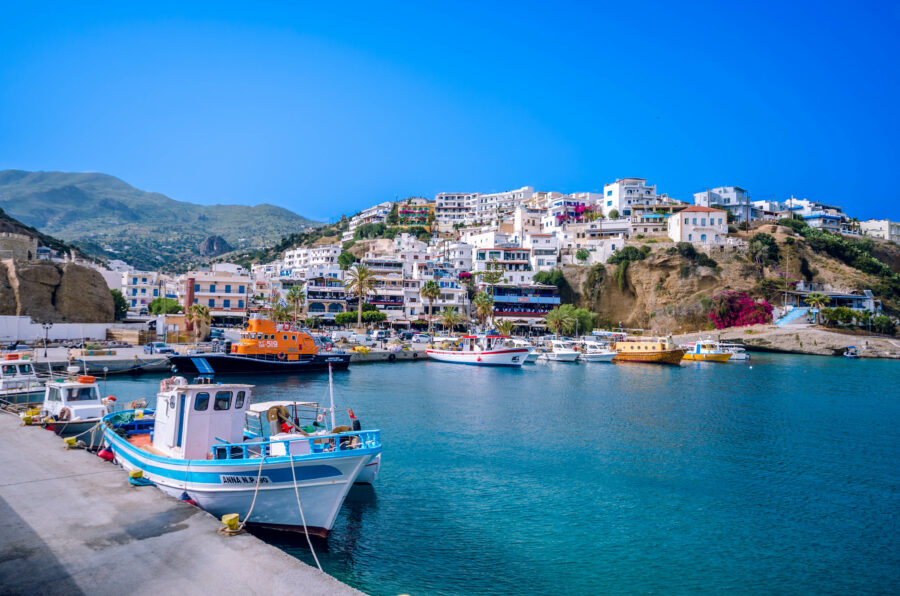
Crete sits in the classic Mediterranean climate zone, so you get distinct seasons that really shape your trip.
Long, hot summers. Mild, sometimes rainy winters. The weather can swing a bit, with big differences in temperature, rainfall, and sunshine depending on the month.
Overview of Crete’s Mediterranean Climate
Crete really does have one of Europe’s most pleasant climates. Being so far south in the Med, winters stay milder than most other Greek islands.
You get hot, dry summers and mild, rainy winters. What’s unique here? Summer seems to go on forever—sometimes from April all the way to October.
The island’s geography stirs things up, too. North Crete often feels windier and cooler, while the south, shielded by mountains, gets more warmth.
If you’re heading into the mountains, pack a sweater. It can get chilly, and yes, sometimes there’s even snow in winter!
Eastern Crete tends to be drier, while the west sees more rain. It’s not a huge difference, but you notice it if you spend some time traveling around.
Temperature Variations by Season
Summer (June-September): Peak season. Daytime temps usually land between 25-30°C (77-86°F). July and August can shoot over 30°C (86°F), and nights stay warm, rarely dipping below 20°C (68°F).
Spring (March-May): Feels fresh, with temps climbing from 15°C to 25°C (59°F to 77°F). May can already feel like summer, just without the searing heat.
Fall (October-November): Still warm—think 15-25°C (59-77°F). The sea stays swimmable through October.
Winter (December-February): Unpredictable but generally mild. Highs around 15°C (59°F), nights can get down to 8-10°C (46-50°F). The mountains? Way colder, sometimes snowy.
Winds, especially on the north coast, can make things feel cooler than the numbers suggest.
Rainfall Patterns and Their Impact
Most of Crete’s rain falls in winter. Summer? Almost bone dry.
Wet Season (November-March):
- December and January get the most rain.
- Storms can last a few days.
- Rainfall averages 600-800mm per year, but it really depends where you are.
- Western Crete? Wetter than the east.
Dry Season (May-September):
- Barely any rain, especially in July and August.
- Maybe a quick thunderstorm late in summer.
- Drought isn’t unusual.
Winter rain keeps the island’s farms alive and makes spring absolutely explode with flowers and green hills.
Sometimes heavy winter rain triggers flash floods, especially in the mountains and gorges. Not common, but it happens.
Sunshine and Number of Sunny Days
Crete ranks as one of Europe’s sunniest spots, clocking over 300 sunny days a year. That’s a huge draw.
Summer sunshine: Expect 12-14 hours of blazing sun daily from June through August. UV levels can get pretty intense.
Winter sunshine: Even in the off season, you’ll usually get 4-6 hours of sun per day. Clouds and showers show up, but rarely stick around long.
Clear air means you get jaw-dropping views—sea, mountains, all of it. Sometimes mist rolls into the valleys in the morning but vanishes once the sun’s up.
Sunset lingers late in summer, around 8:30-9:00 PM. Those long, golden evenings? Perfect for a slow dinner outside.
Crete’s Seasons: When to Visit and What to Expect
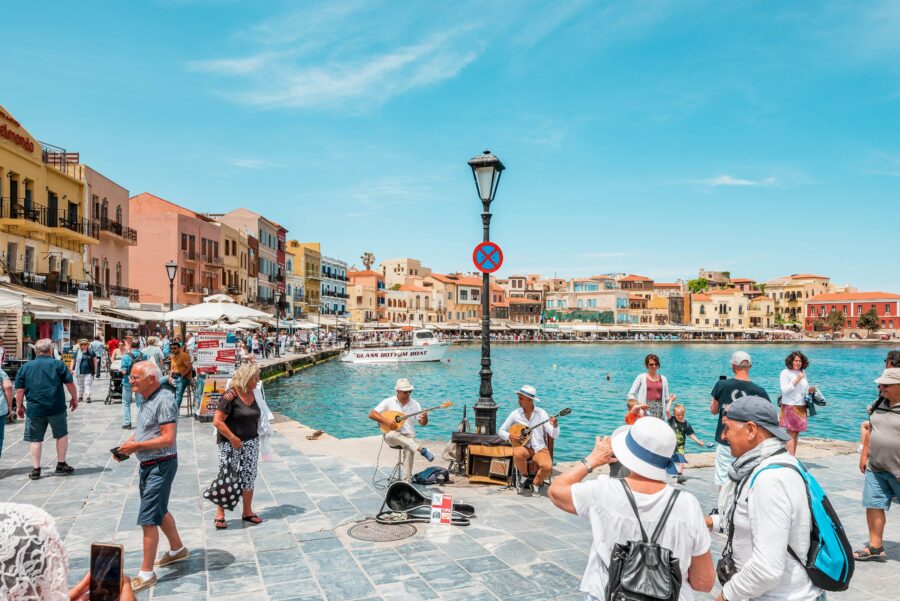
Every season in Crete brings its own vibe. The Mediterranean climate guarantees sun in summer, but the other months offer their own perks—especially if you’re not into crowds.
Spring: Mild Weather and Blooming Landscapes
Spring (April to early June) in Crete feels almost enchanted. Wildflowers cover the hills, and temps sit comfortably between 15-25°C (59-77°F).
If you like hiking or poking around ancient ruins, this is your time. The heat’s still manageable, and you won’t get mobbed by tourists.
The sea’s chilly in April (about 17°C), but by late May, you’ll spot swimmers braving it. Fewer tourists mean you get more space at places like Knossos and Balos Lagoon.
Hotels and restaurants stay open but aren’t crowded, and prices haven’t spiked yet. If you’re in town for Greek Orthodox Easter, you’re in for a treat—those celebrations are something else.
Summer: Hot Summers and Vibrant Atmosphere
Summer (late June through August) is Crete’s high season. It’s hot—often over 30°C (86°F), sometimes even hitting 40°C (104°F) in July and August.
The sea feels amazing, hovering at 24-26°C. Beaches like Elafonisi and Falassarna are packed, and every taverna and bar seems to buzz with energy.
Be ready for crowds, especially at the big-name spots. Book your room early—prices skyrocket in summer.
If you’re sightseeing, get up early to beat the heat. Locals swear by their afternoon siestas, and honestly, you might want to join them.
Autumn: October and the Shoulder Season
September and October just might be the best months to visit. The crowds thin out, but the weather still delivers—think 20-25°C (68-77°F).
The sea holds its warmth into October (around 23°C), sometimes even warmer than the air. It’s a great time to mix swimming with sightseeing.
After mid-September, hotels and restaurants are less crowded and more affordable. Grape harvest kicks off in September, so it’s a great time to hit some wineries.
October brings a few rain showers, but they tend to pass quickly. The landscape starts greening up, and hiking gets easier with the cooler temps.
Winter: Tranquil Getaways and Unique Experiences
Winter (November through March) transforms Crete. Temps usually land between 10-15°C (50-59°F), with cooler nights.
Tourism drops off, so you’ll see a more authentic side of the island. A lot of coastal spots close for the season, but the bigger towns keep humming along.
Mountains often get a dusting of snow, which looks wild next to the sea. Winter’s perfect for exploring museums, traditional villages, and cozy tavernas serving up hearty local dishes.
Rain falls more often in December and January, but breaks in the weather bring out sunny days. By February, almond blossoms show up—spring’s not far off.
Regional Highlights: Weather and Tourism by Location
Crete’s regions each have their own quirks. Weather and crowds shift depending on where you land, so your experience can really change from one area to another.
Heraklion: Capital City Climate and Activities
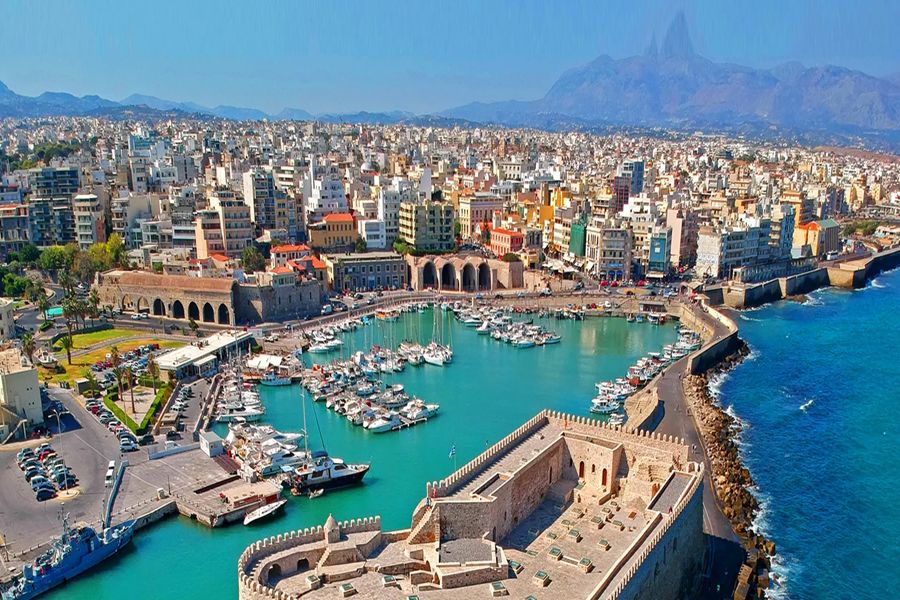
Heraklion, the island’s lively capital, gets typical Mediterranean weather—mild winters, warm summers. Spring (April-May) sits around 20°C (68°F), ideal for checking out Knossos Palace before the crowds descend.
July and August crank up the heat—30°C (86°F) or higher isn’t rare. The city fills with tourists, restaurants get jammed, and prices rise. If you’re there in high summer, mornings are best for exploring; afternoons are made for siestas.
Fall (September-October) feels just right—warm days (around 25°C/77°F), fewer tourists, and the sea’s still inviting. Museums and ruins become way more pleasant without the lines.
Winter (November-March) slows things down. It’s cooler and sometimes rainy, but you’ll see a more local side of Heraklion, and prices drop a lot.
Chania: Western Crete’s Seasonal Appeal
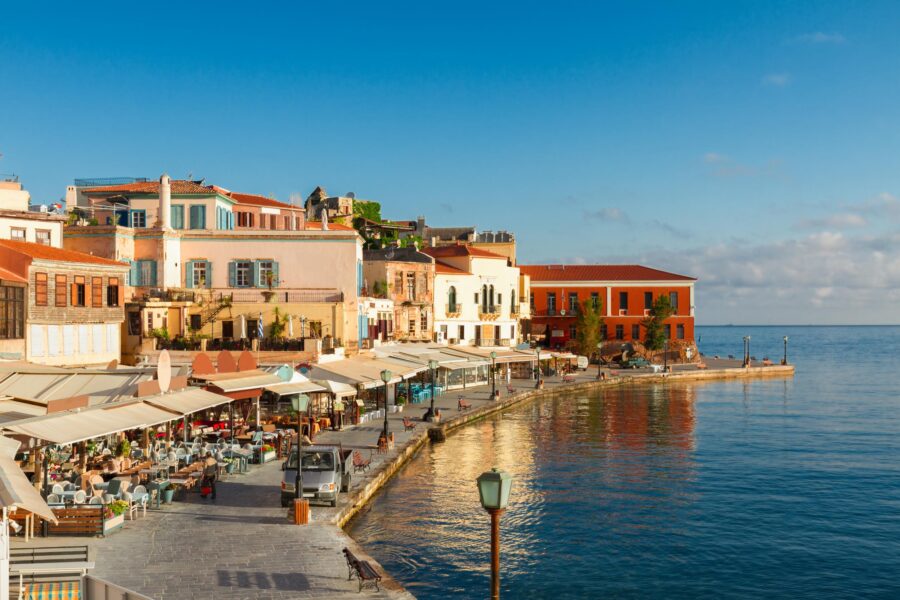
Chania in the west has a slightly softer climate than Heraklion. May is magical—wildflowers, 22°C (72°F), and a laid-back vibe around the Venetian harbor.
Come summer, Chania’s old town gets crowded. July and August often hit 30°C (86°F) or more, and beaches like Balos and Elafonisi fill up fast. If you want a spot on the sand, go early.
Late September and October are fantastic—warm weather, fewer crowds, and most places still open. Sunset walks along the harbor feel extra special when you’re not elbow-to-elbow with other tourists.
Winter in Chania brings some rain, but sunny days aren’t rare. The Samaria Gorge closes, but wandering the town gets more authentic (and cheaper).
Exploring Iconic Beaches
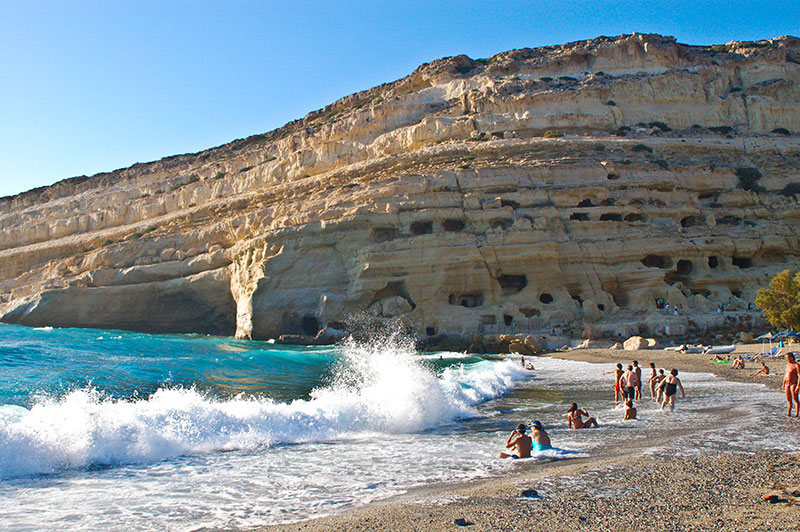
Crete’s beaches totally change with the seasons. The southern coast, like Matala Beach, warms up first in spring, thanks to its sun-catching position.
By late May, the sea is usually around 20°C (68°F)—good enough for swimming if you’re brave. July and August? The beaches are paradise, but also packed. Elafonisi’s pink sand is Instagram-famous, but you’ll want to go early (before 10 AM) or catch the evening light to avoid the crowds.
September’s a solid compromise—warm seas (about 25°C/77°F), and fewer families since school’s back in session. Even in October, you can swim, especially at southern beaches.
Winter flips the script. Locals don’t swim much from November through March, but the beaches become peaceful, perfect for long walks or photography—no crowds, just the sound of the waves.
Outdoor Activities and Seasonal Recommendations
Crete’s outdoor scene changes with the calendar. Whether you’re into hiking or just want to chill on beautiful beaches, timing can make all the difference.
Hiking Opportunities and Best Months for Trails
If you’re hiking, shoot for April to early June or September to October. Temps stay in the high teens (°C), so you can actually enjoy the walk. Spring (April-May) is especially stunning—wildflowers everywhere.
The Samaria Gorge—Europe’s longest at 16km—usually opens from May to October. May or September are best if you want to dodge both crowds and scorching heat. The gorge shuts down in winter because of rain and the risk of flash floods.
For easier hikes, try parts of the E4 European Long Distance Path. Pack good shoes and plenty of water, since you won’t find many facilities out on the trails.
Beach Days and Swimming Season
Crete’s swimming season actually stretches out longer than most people expect. July and August bring the warmest water—hovering around 25°C (77°F)—but you can dive in as early as late May and keep swimming into October.
Matala Beach, tucked along the south coast, draws crowds with its wild hippie history and those iconic carved cliff caves. If you want a bit more space to spread out, June or September usually hit that sweet spot between warm water and manageable crowds.
Here’s a quick look at how the beaches stack up by season:
| Season | Water Temp | Crowds | Notes |
|---|---|---|---|
| May-June | Warming up | Moderate | Perfect balance |
| July-August | Warmest | Very busy | Book accommodations early |
| Sept-Oct | Still warm | Thinning out | Sea warmest in September |
North coast beaches—think Hersonissos or Agios Nikolaos—tend to be more developed and sometimes windier. Down south, spots like Matala usually stay calmer. If you’re feeling adventurous, Elafonisi’s famous pink sand really shines in the shoulder season, when you can enjoy the beauty without the summer stampede.
Cultural Experiences and Historical Attractions
Crete’s history? It’s absolutely wild—thousands of years packed with drama, innovation, and more than a few surprises. You’ll stumble across incredible archaeological wonders everywhere, from ancient Minoan palaces to Venetian fortresses.
Visiting Archaeological Sites at the Right Time
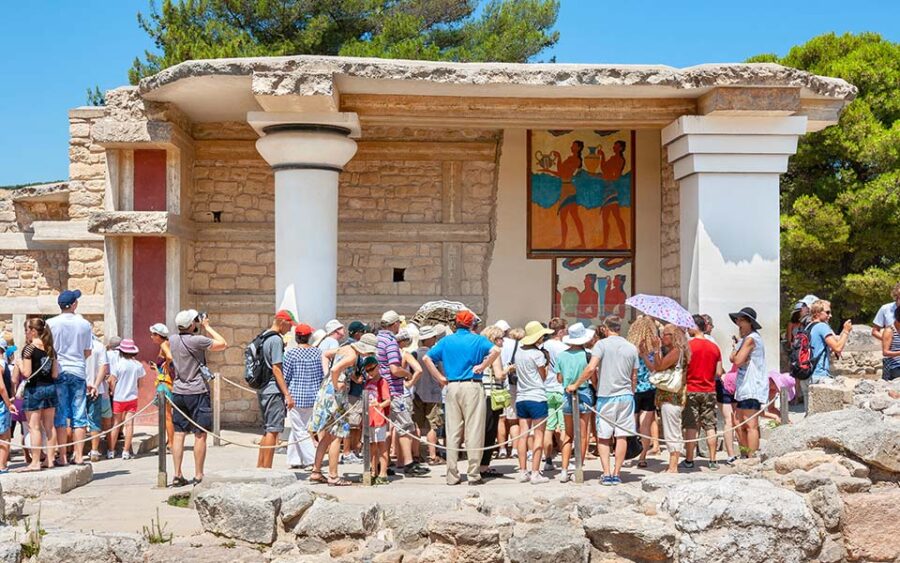
Spring (April-May) and fall (September-October) usually give you the best shot at comfortable weather for exploring ruins. Temperatures hover around 65-75°F, so you won’t melt while wandering through exposed sites.
If you’re into photography—or just want to dodge the crowds—try visiting early in the morning (8-10am) or later in the afternoon (4-6pm). Knossos, especially, feels less hectic at these times.
Winter (November-March) often means nearly empty archaeological sites. It’s a different vibe entirely—almost eerie, in a good way. Just double-check opening hours, since some places cut back schedules in the off-season.
Must-See Historical Sites
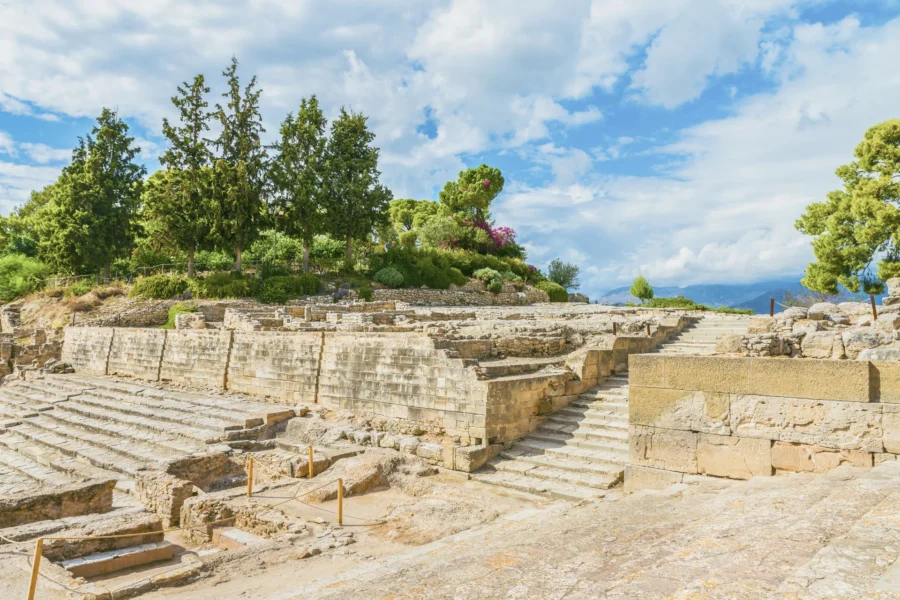
Knossos Palace, not far from Heraklion, tops every history buff’s list. This 4,000-year-old Minoan palace still shows off vibrant frescoes and hints at a civilization way ahead of its time. If you can, arrive early to beat the tour groups.
The Archaeological Museum in Heraklion holds the island’s most important Minoan artifacts. It’s worth pairing with a Knossos visit to see treasures in context.
Phaistos Palace in southern Crete doesn’t draw the same crowds as Knossos, but it’s just as fascinating. The mysterious Phaistos Disc was found here—still a puzzle to this day.
Spinalonga Island tells a more recent story, having served as one of Europe’s last leper colonies until 1957. You can catch a boat from Elounda or Plaka, and in the shoulder seasons, it’s much quieter.
Venetian fortresses in Rethymno and Heraklion show off Crete’s medieval side, with architecture that’s both imposing and beautiful. The sea views aren’t bad either.
Comparing Crete to Other Greek Islands
When you’re sizing up Greek islands for a vacation, Crete really does offer distinct advantages that set it apart. Sure, smaller islands have their charm, but Crete’s sheer diversity and year-round appeal make it something special.
Why Crete Stands Out for Travelers

Crete is a world of its own. It’s huge—almost like its own mini-continent. On the smaller islands, you might run out of things to do after a few days, but Crete rewards longer stays with incredible food, historic sites, and landscapes that keep changing as you explore.
You’ll find wild mountain ranges, deep gorges for hiking, and some of the best beaches in Greece. There’s a real mix of bustling cities like Heraklion and Chania, plus tiny villages that feel untouched by mass tourism.
Crete’s history? It’s unmatched. The Minoans made their home here, and you can still wander through ruins like Knossos that you simply won’t find anywhere else in Greece.
Seasonal Differences Across the Greek Islands
On islands like Santorini or Mykonos, the main season runs from June to September. Crete, though, stretches things out thanks to its size and southern location.
You can visit Crete from April to October and still find plenty to do, with swimming weather from May onward. Spring (April-May) brings wildflowers and mild hiking temps before the summer crowds descend. Honestly, Crete feels more alive than Santorini in early May, which can still be pretty sleepy.
Things get even more interesting in the shoulder seasons. While smaller islands start to wind down in October, Crete keeps humming along. Many tavernas and attractions stay open, so you get a more authentic experience without the crowds.
Frequently Asked Questions
Planning a Crete trip means wrapping your head around the island’s climate and tourist rhythms. Here are some answers to questions that come up all the time.
What is the ideal month for optimal weather in Crete?
Late May to mid-June and September usually deliver the best weather in Crete. You’ll see temperatures between 70-85°F (21-29°C), just right for beach days without the midsummer sizzle.
These shoulder months bring plenty of sun and almost no rain. The sea’s had time to warm up, so swimming feels great.
Personally, I think early June is kind of magical—wildflowers still linger in some spots and the beaches haven’t filled up yet.
How does Crete’s climate vary throughout the year?
Crete’s got that classic Mediterranean climate—hot, dry summers (June-August) with temps often topping 86°F (30°C), and mild, rainy winters (December-February) where you’ll see 50-60°F (10-15°C).
Spring means the island bursts into green, dotted with wildflowers. Fall brings warm days, cooler nights, and the first hints of rain by late October.
The southern coast usually stays a bit warmer than the north, so keep that in mind when you’re picking where to stay.
Which season offers the most comfortable experience for tourists in Crete?
Spring (April-May) and autumn (September-October) hit the sweet spot for most travelers. You get pleasant weather, fewer crowds, and lower prices compared to the summer rush.
In spring, Crete’s landscape really comes alive with blooming flowers. Hiking trails are especially lovely then.
Come fall, you can still swim in the sea while it’s at its warmest. Plenty of locals swear by September as the perfect month to soak up Crete.
Are there specific months when it’s advisable to avoid visiting Crete due to weather?
January and February? Those are the rainiest months, with shorter days and a chill in the air. It’s still milder than northern Europe, but not exactly prime beach weather.
July and August can get pretty intense, with temps sometimes pushing into the high 90s°F (mid-30s°C). If you don’t love the heat or you’re traveling with little ones, those months might be tough.
In winter, a lot of coastal businesses shut down, though cities like Heraklion and Chania stay lively all year.
When does Crete experience its peak tourist season, and what are the implications for visitors?
July and August are peak season—no surprise there. Visitors from all over Europe flock to the island, and things get crowded fast.
Beaches are packed, and accommodation prices shoot up. Attractions like Knossos Palace or Balos Beach can feel overwhelming, with long lines and packed parking lots.
If you need to travel in peak season, book your hotel and rental car way ahead of time. It’s also worth considering a stay in less touristy areas if you want a more laid-back vibe.
Can you provide insights on sea conditions for swimming in Crete during different times of the year?
The sea around Crete usually feels warmest from July through October. During these months, temperatures hover between 73 and 79°F (23-26°C).
By mid-May, the water finally hits a comfortable 68°F (20°C) for most swimmers. You might still find it a bit brisk, but plenty of people take the plunge.
When winter rolls in, sea temperatures dip to around 59-63°F (15-17°C). That’s probably too chilly for casual swimming, though a few determined folks with wetsuits might still go for it.
The sea starts to warm back up again in April. If you’re hoping for a dip before summer, you’ll notice the difference.
On the north coast, beaches often get stronger winds and choppier waves. The southern coast usually stays calmer and more sheltered.
If you’ve got kids in tow, those southern beaches seem like a safer bet, especially in spring. Winds can really pick up that time of year, so it’s worth keeping in mind.



